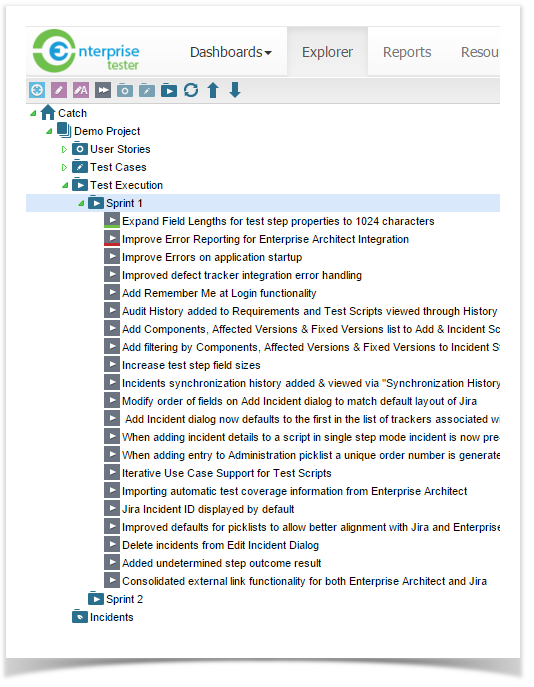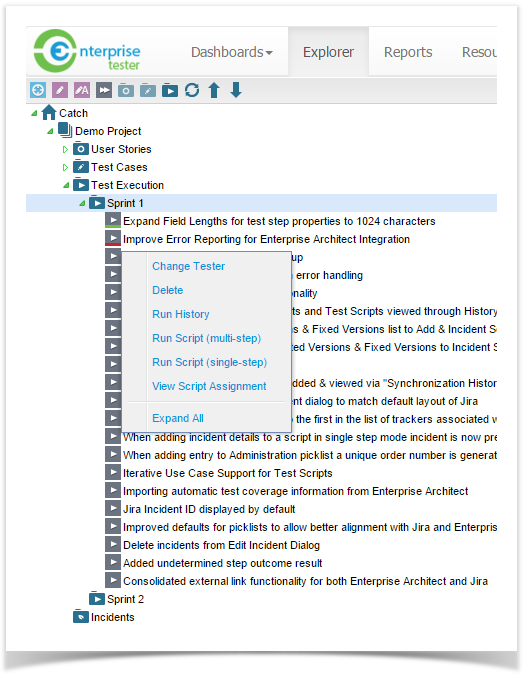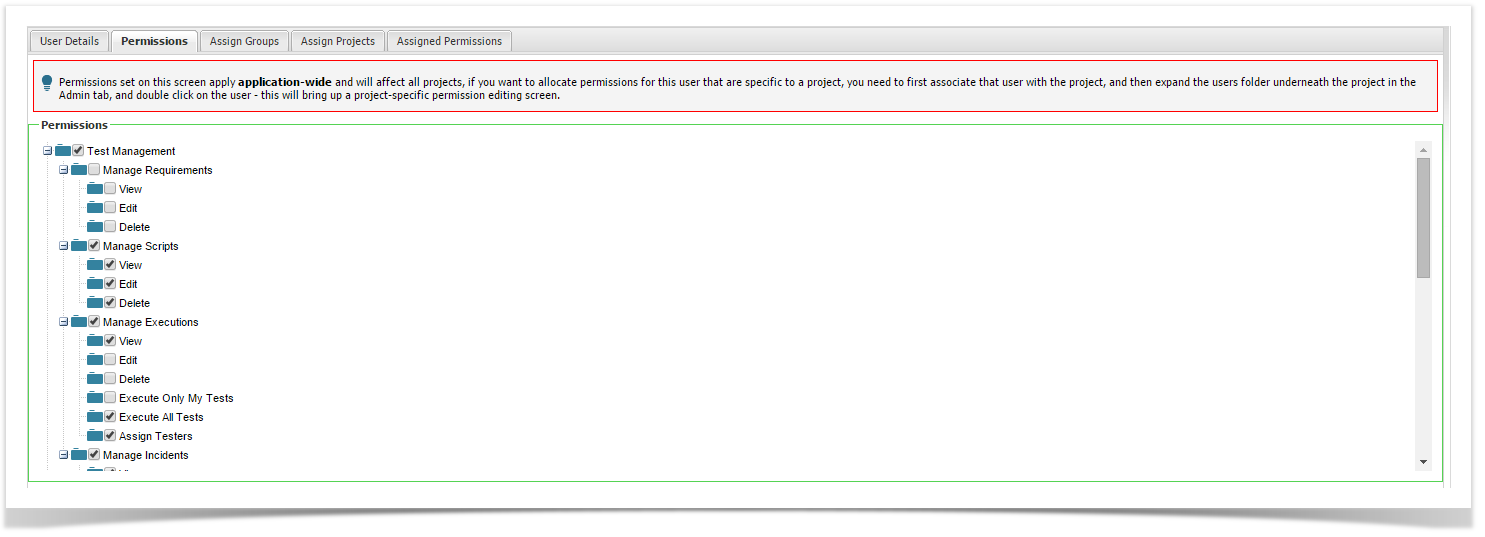...
Double click on the test to be executed.
Select the Multi Step Execution tab.
- Type in the results and select the status for the test step.
- Attachments can easily be added to each step.
- Incidents can be added or you can link to an existing incident in Enterprise Tester or your external system.
- In the title bar there is a link to the related Test Script. If you have permissions you can click on this link and update the Script or you can edit the Test Execution data directly which will update the Test Script automatically.
- A stop watch feature is included for recording actual time spent testing. You can start and stop the time as required, close and come back to the run at a later time.
- The Run screen allows you to easily navigate to the next Next or previous Previous scripts by using the arrow buttons located in the top right corner.
- Save and Next button buttons allow you to move to the script on the list on your summary screen.
- Testers also have the option to change the status of all steps to Pass by clicking the Pass All button and click on Save.
- The test execution will be saved. To view more information on the test step, click on the plus button to expand the individual steps to provide more information.
...
- Double click on the test to be executed.
- Select the Single Step Execution tab.
- In the title bar there is a link to the related Test Script. If you have permissions you can click on this link and update the Script or you can edit the Test Execution data directly which will update the Test Script automatically.
- A stop watch feature is included for recording actual time spent testing. You can start and stop the time as required, close and come back to the run at a later time.
- The Run screen allows you to easily navigate to the next Next or previous Previous scripts by using the arrow buttons located in the top right corner.
- Type in the results, notes and select the status Status for the test step etc.
- Click on ‘Save’the Save button.
Ways to Start Test Execution
...
- Double click Test Execution data on the grid.
- Double click Test Execution data in the Explorer tab via the tree.
. - Right click on the Execution Data and select either 'Run Script (multi-step)' or 'Run Script (single-step)' from the menu.
Edit Test Scripts During Test Execution
When performing Test Execution, you can automatically edit the following fields of a Test Script provided the correct Permissions have been given:
- Description
- Expected Results
- Data
- Notes
...
Permissions that will allow users to update Test Scripts during Test Execution are:
- Manage Scripts View and Edit
- Manage Executions View and Edit
- Execute All Tests / Execute Only My Tests
...
If Test Execution has been completed then users cannot update Description, Expected Results, Data, Notes and Status fields.
Actual Results data , Data and attachments Attachments can be added at any time.
Prevent Editing Test Scripts During Test Execution
To stop users from automatically updating Test Scripts while performing Test Execution:
Remove the Manage Executions Edit permission.
How Test Script Changes Affect Test Execution
If Test Execution data is created where the status is “Not Run” is “Not Run” and the related Test Script is subsequently changed, your Execution data will be updated to reflect changes made in the Test Script.
...
If your Test Execution is mid-run, and the related Test Script is changed at the time the test is being run, your Execution data will not be changed automatically.
...


